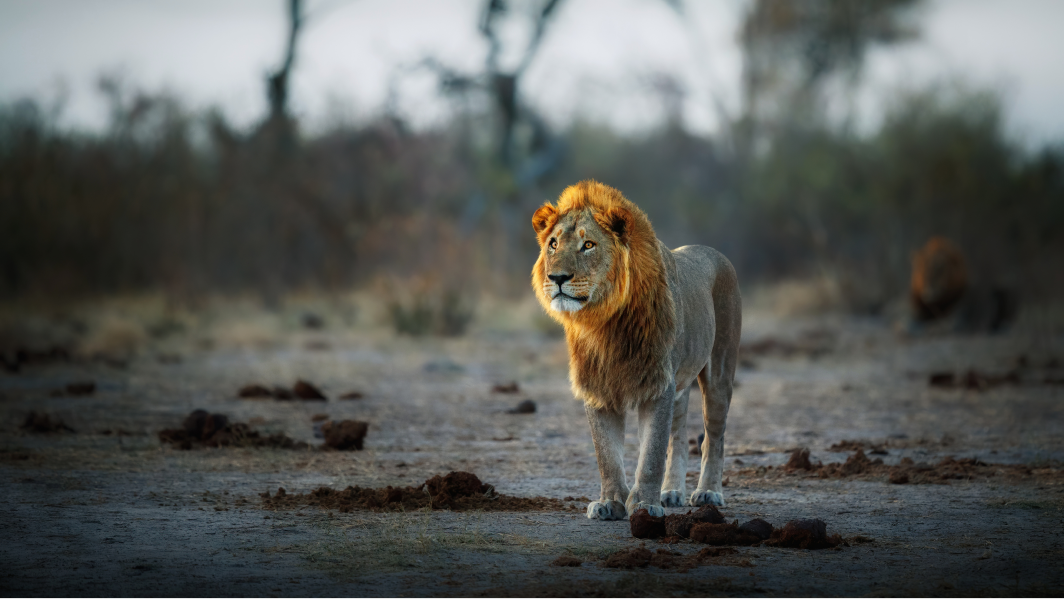Total Weight
Height
Diet
Lifespan
Total Weight
Height
Diet
Lifespan
Patna zoo received two male and two female lions from wild origin in the year 1978. These four lions started bre
eding in the year 1982 and this led to start of conservation breeding of lions at Sanjay Gandhi Biological
Park.
In the later years, Patna Zoo provided lions to many zoos in India, namely, Ranchi Zoo, Jaipur Zoo, and other
zoos under the animal exchange program. Patna Zoo received two hybrid lions from Bokaro Zoo in the year 2003
named Rambha and Urvashi.
Hyderabad Zoo provided two lions in the year 2007 named Vishal and Saraswati. These two lions bred successfully
in the year 2012 and two cubs ‘Samrat’ and Sheru survived.


The lion enclosure at Patna Zoo provides a spacious and natural habitat for the majestic lions.
It features a large grassy area surrounded by tall trees and bushes, creating a semblance of their natural
environment. The enclosure includes elevated platforms and rocks for the lions to climb and rest on.
A moat acts as a barrier between visitors and the lions, ensuring safety. The enclosure is designed to meet
the lions’ behavioral and physiological needs, promoting their well-being and allowing visitors to observe
these incredible animals up close.
The majestic lion, known as the king of the jungle, captivates visitors with its powerful roar and regal presence.
At Patna Zoo, visitors can observe lions up close, learning about their behavior, hunting skills, and social structure.
| Attribute | Details |
|---|---|
| Weight | Males: 150-250 kg, Females: 100-180 kg |
| Height | Males: Up to 10 feet long (including tail), Shoulder height: 3.5-4 feet; Females: Slightly smaller |
| Food Preferences | Carnivorous diet — mainly large herbivores like deer, buffalo, and wild boar |
| Wild Population | Lion numbers are declining, with approximately 20,000 left in the wild, mostly in Africa |
| Conservation Category | Classified as Vulnerable due to habitat loss and human conflict |
| Wild Population | Lion numbers are declining, with approximately 20,000 left in the wild, mostly in Africa |
| Social Behavior | Lions are social cats, living in prides typically made up of related females, their cubs, and a few males |
| Special Adaptations | Lions communicate through roars, scent marking, and facial expressions, with males using their mane to appear larger and more intimidating |
| Hunting Style | Predators — working together in prides to ambush and take down prey, usually at night |
| Distinctive Feature | Males sport thick, flowing manes which vary in color from blond to black, indicating age and health |
| Closest Animal Relatives | Closely related to tigers, leopards, and jaguars, all belonging to the Panthera genus |
Lions are carnivores, meaning they rely entirely on meat for sustenance. Their diet primarily includes large herbivores, such as deer, wild boar, antelope, and buffalo, which are found in their natural habitats across grasslands and savannas. As apex predators, lions often hunt in groups, using teamwork to surround and bring down prey much larger than themselves. Although female lions (lionesses) are typically the primary hunters in a pride, male lions will join in when tackling especially large prey or defending kills from scavengers. Lions are opportunistic feeders, meaning they will also scavenge meat from other predators if the chance arises. Lions do not eat vegetation, but they may consume grass occasionally to aid digestion or clear their stomachs. They usually need to drink water daily, but can go for a few days without it if they obtain enough moisture from their prey.
Open Now
All visits to Patna Zoo help fund our work both at the zoo and worldwide.